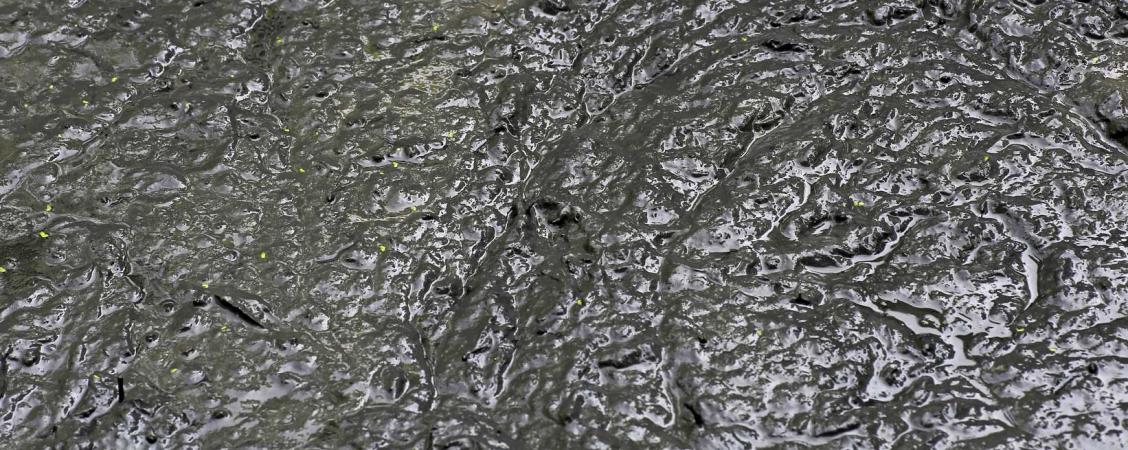
Sludge Degritting
SlurryCup™ / Grit Snail® Sludge Degritting Solution
Historically, grit removal facilities have been located in the headworks of a plant. However, many treatment plants have under-performing headworks grit removal systems that are unable to remove grit loads that enter their plants. This can allow large amounts of grit to pass through the headworks, settle in the clarifiers, and negatively impact the sludge processing equipment and sludge handling facilities. While you may not be able to see grit in sludge, all operators have seen the damages it has has caused. First let's start by answering some basic questions.
What problems does grit (or sand) cause for wastewater treatment plants?
Wastewater grit that is not captured by a headworks grit removal system causes significant problems for virtually every downstream treatment process. Left unchecked, grit causes abrasive damages to expensive equipment like pumps and all of the other moving parts in wastewater treatment plants. Even after the mechanical damage has been done, grit still causes an even bigger, yet much less visible problem -- deposition.
What is grit deposition?
As grit passes through a wastewater treatment plant it settles at any point in the plant that has a lower velocity. When grit settles it replaces the volume that each treatment process can treat. Deposited grit reduces process efficiency, increases maintenance, and lowers the overall performance of the entire plant. Grit deposition negatively impacts most treatment processes, but grit in sludge can be one of the most difficult to remedy.
Where does grit settle in treatment plants?
Everywhere that has a low enough flow velocity to not scour grit out. Grit can be found in clarifiers, channels, corners, bends in piping, and smothering aeration diffusers. Anything that makes its way through any of these areas these will eventually end up in sludge.
What happens to grit when in a sludge digester?
To put it simply, nothing. As an inorganic particle, no digestion processes can treat it. Grit takes up volume and space inside the digester and remains there until it is manually removed. Grit in sludge causes a gradual reduction of processing capacity for digesters but it also negatively impacts all sludge treatment and handling processes.
Aside from reducing treatment volume, what other problems are caused by grit in sludge?
Grit causes significant abrasive damages to things like clarifier rake arms, sludge transfer pumps (primary, thickened, digested, WAS, RAS), centrifuges and other expensive mechanical equipment. Grit build-ups in digesters can create unstable operating conditions by increasing foaming, reducing volatile solids destruction, impairing mixing and reducing gas production.
How do I get grit out of the sludge in our digesters?
Removing these deposits is very expensive, dangerous and time-consuming. It requires taking the digesters offline, exposure to toxic gasses, and confined space entry for repairs and re-commissioning, not to mention removing, handling and disposing of the deposited material. A much more effective way to get grit out of digesters is to get it out of the sludge with sludge degritting.
What is sludge degritting?
Sludge degritting is the process of removing inorganic grit and sand particles that have become trapped in various sludges at wastewater treatment plants. This is a challenging application given the high viscosity of the sludge and the abrasive nature of sand. Historically this has been done with cyclone concentrators and grit dewatering screws which can be maintenance nightmares. Using SlurryCup™ vortex grit washing and Grit Snail® dewatering has proven to be a much more efficient method of removing grit from sludge.
What are the downsides of cyclone / screw sludge degritting?
Conventional sludge degritting systems typically incorporate cyclone concentrators and grit classifiers. The outlet apex valves required on cyclone concentrators restrict the amount of grit they can process and are subject to plugging as grit loads increase, particularly during wet weather. During wet weather events plants can see 20 or 30 times the grit volume and receive as much as 70% of their annual grit load. Typical classifiers have small clarifier tanks with high overflow rates and fast turning turbulent screws for washing and transporting grit. Both of these features reduce the size and amount of grit that can be retained.
What are the advantages of SlurryCup™ / Grit Snail® sludge degritting?
Side-by-side testing shows that the SlurryCup™ grit washing technology removes as much as 20 times the grit volume removed by cyclone/screw classifier systems. The organic content of the grit output from cyclone/screw classifiers typically exceeds 35% which significantly increases odor issues and the volume of materials to send to landfill. SlurryCup™ / Grit Snail® outputs a cleaner and drier grit product with les than 20% Volatile Solids.
- Over 90% removal of 75 µm particles (2.65 Specific Gravity)
- Increased efficiency at higher flows which carry higher grit loads
- Removes as much as 20 times more grit than a cyclone / screw classifier
- First flush solids handling capacity minimizes grit loss
- Low organic content (< 20% VS) of classified grit, reduces volume going to disposal
- 60% total solids content
- Enclosed system improves odor control
- Significantly reduces operational and maintenance costs
- Hydro International sludge degritting is a proven, tested technology with a long history of successful operation
Download this brochure to learn more about sludge degritting with SlurryCup™ / Grit Snail® Advanced Grit Management® systems.
